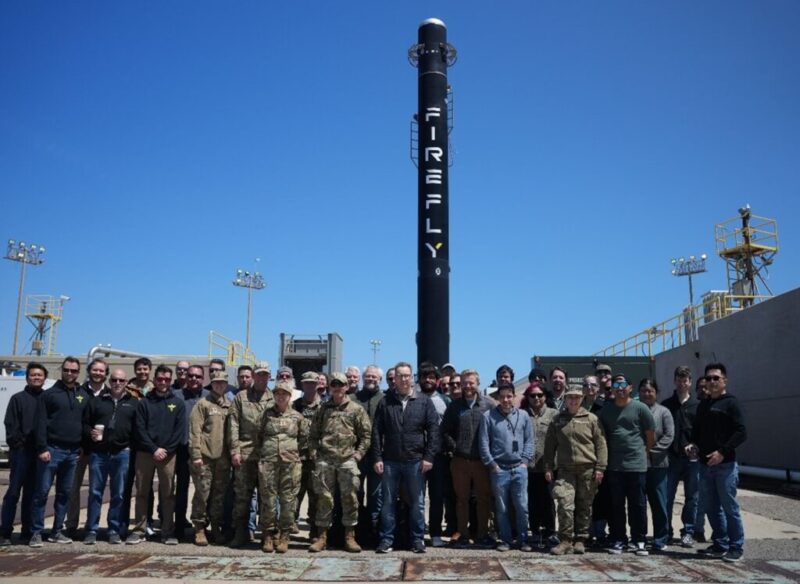US Space Force VICTUS NOX Mission Enters ‘Hot Standby’ Phase

The Firefly Alpha launch vehicle and payload provider, Millennium, moved into the hot standby phase and wait for the VICTUS NOX callup. Photo: Firefly
A U.S. Space Force mission to demonstrate on-demand satellite launch and delivery into an assigned orbit officially entered a six-month window on Aug. 30, in which Millennium Space Systems and Firefly Aerospace will be given the go-ahead to proceed.
Sometime during the “hot standby” phase of the VICTUS NOX Tactically Responsive Space (TacRS) mission, Space Force will give its mission partners Millennium Space Systems, the satellite manufacturer, and space launch services company Firefly Aerospace an alert that begins a 60-hour window that requires the satellite to be delivered to Vandenberg Space Force Base, Calif., where it will undergo final testing, fueling, and integration with Firefly’s Alpha launch vehicle payload adaptor.
At any time within 30 days after the close of the 60-hour window, the Space Force will give Firefly a launch notice and final orbit requirements, kicking off a new 24-hour window for the company to update the flight software, encapsulate the payload, transport it to the launch pad, mate it to Alpha, and then be ready to lift-off at the first available launch window.
Firefly has already manufactured and acceptance tested the critical components for its Alpha rocket and conducted a static fire to ensure the systems operate within flight parameters. The two companies have also conducted multiple rehearsals, including packing and delivering a satellite mockup to Firefly’s launch integration facility at Vandenberg to practice all launch operations.
Millennium Space Systems, a unit of Boeing, said last October when it announced it was selected to supply the VICTUS NOX spacecraft that its satellite will conduct a space domain awareness mission in Low-Earth Orbit.
Once the payload is inserted into orbit, Millennium will work to fully initialize the spacecraft within 48 hours and then begin operations for the mission.
The satellite was built at Millennium’s facilities in El Segundo, Calif., near Los Angeles, about 160 miles southeast of Vandenberg.
“The U.S.’ ability to rapidly respond to on-orbit needs is critical to our national defense, particularly in today’s evolving space environment,” Lt. Col. MacKenzie Birchenough, material leader for the Space Force’s Space Systems Command Space Safari effort, said in a statement. “The accelerated build time the team demonstrated for VICTUS NOX, combined with the demanding launch and on-orbit goals, exemplifies our strong commitment to preserving our nation’s dominance and ability to freely operate in the space domain.”
Space Systems Command told Defense Daily that VICTUS NOX has six phases. The first phase was the build effort and lasted about a year, and included contracting and building the launch and space vehicles, and the ground segment. Hot standby is the second phase.
Notice to activate the 60-hour window is the next phase, followed by the up to 30-day alert phase, and then will come notice to launch, which opens the 24-hour period to encapsulate the satellite, mate it with the launch vehicle and then launch.
“The Activation, Alert, and Launch phases could be as brief as four days total or last over a month,” Space Systems Command said. The decisions to activate and launch are up to the Space Force’s senior leadership.
The VICTUS NOX mission is related to another TacRS effort announced last week by the Pentagon’s Defense Innovation Unit (DIU), which is soliciting a rapid demonstration of a launch of a spacecraft that would closely observe a simulated space system for domain awareness. The DIU is planning for the VICTUS HAZE demonstration to occur within 18 months.